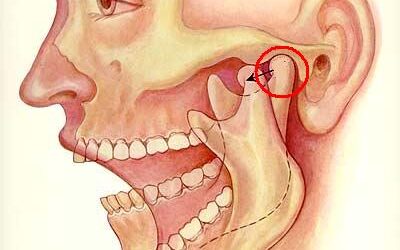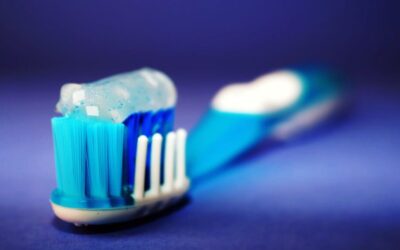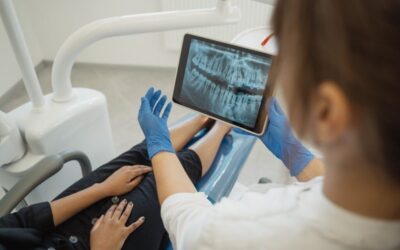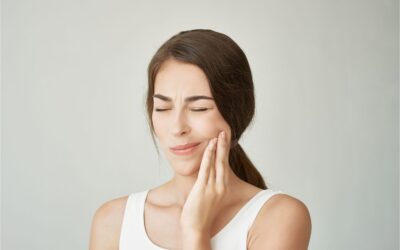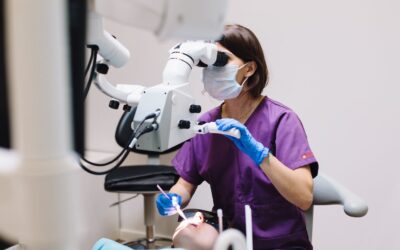Insights
Stay up-to-date with the latest news and ideas in the fields of Orofacial Pain and Oral Medicine, Geriatric Dentistry, Oral Pathology and Radiology, Pain Medicine and Pain Science, and Community Oral Health.
Overlooked Factors for Dental Service Utilization
May 16, 2024
Gender, race, and ethnicity may be missed opportunities to explore how social identity components can hinder dental service utilization. Recognizing the psychosocial benefits of oral health and the importance of maintaining healthy teeth requires insight and empathy...
Misconceptions in the Cleft Lip and Palate Community
Apr 29, 2024
Cleft lip (CL) and cleft palate (CP) are congenital deformities caused by unusual embryonic facial development during intrauterine life [1,2]. This medical condition is not a significant cause of mortality in developed countries; however, it does cause considerable...
Busted! 5 Myths About Aging
Apr 17, 2024
Myths are beliefs that while widely held are not true. There are so many myths about aging that an entire book could be filled. Below we discuss some old and some new myths that you may have heard in your professional and personal circles. See if you recognize them....
TMJ-OA: Not Just an Older Person’s Problem
Apr 16, 2024
The temporomandibular joint (TMJ) comprises the mandibular condyle and the glenoid fossa of the temporal bone, covered by fibrocartilage, which provides greater resilience and support to mechanical stress [1]. This joint can be affected by bone deterioration, causing...
Older Adults with Chronic Pain Can Benefit From Being Physically Active
Apr 8, 2024
According to the Centers for Disease Control and Prevention (CDC), around 50 million adults in the U.S. experience chronic pain each year [1]. Those who are more likely to be impacted by it are older adults. Often, those who are experiencing chronic pain will shy away...
The Link Between Tobacco, Alcohol, and Oral Cancer
Mar 31, 2024
Oral cancer is a significant public health problem worldwide, ranking as the 6th most common cancer with a 5-year survival rate of 50% [1]. It accounts for roughly 3% of all cancers diagnosed annually in the United States. On average, 90% of these cases are oral...
The Essential Do’s and Don’ts of Successful Oral Health Programs
Mar 29, 2024
In this blog, we'll explore some essentials of establishing a Community Oral Health Program, some “Do” and “Do not.” Creating a robust community oral health program is more than a goal; it's a commitment to the well-being of a community. Community Oral Health Program,...
Compliance in Online Teaching: A Case Study of Orofacial Pain Program at Ostrow
Mar 20, 2024
In recent years, and especially during the COVID-19 pandemic, the landscape of higher education has undergone a significant transformation with the proliferation of online learning platforms and the increasing demand for flexible educational opportunities. In response...
Can Yoga Reduce Chronic Pain in Veterans with PTSD
Mar 6, 2024
Post-traumatic stress disorder (PTSD) in veterans is an ongoing health concern that continues to be explored and researched. Many people are looking for ways to help reduce what those with the condition are going through, which often includes chronic pain. A new study...
Elevating Geriatric Dentistry: Best Practices and Considerations
Mar 6, 2024
Geriatric dentistry stands at the intersection of precision, ethics, and patient care. In this blog, we delve into essential guidelines, separating the dos from the don'ts to aid both emerging and seasoned dental practitioners in delivering exceptional care. Creating...
Periodontal Disease and Whole Body Health: The Oral-Systemic Link
Feb 29, 2024
With the separation of medical and dental care, it is easy to see why the public has a difficult time realizing that dental health has a direct effect on medical health. As an oral health care professional it is important to bring awareness of links between the oral-...
Dental Care for Older Adults with Multiple Health Conditions
Feb 26, 2024
The Aging-Related Statistics suggest that by the year 2030, the number of U.S. adults 65 years or older will reach 72 million, representing nearly 20% of the total U.S. population, almost doubling in number as compared to the year 2000 [1]. Older adults are,...
When to See a Dermatologist for Lichen Planus
Feb 21, 2024
Lichen planus (LP) is an immune-mediated disease with an unknown etiology. Its clinical presentation waxes and wanes, and its severity goes from symptomatic oral erosions with erythema to asymptomatic white striations. In the oral cavity, the locations of these...
Diagnosing TMD: When to Consider a Rheumatological Referral
Feb 15, 2024
Painful temporomandibular disorder (TMD) stands as a prevalent source of orofacial pain, affecting 5-12% of US adults. As dentists, our encounters with TMD cases are frequent, with patients presenting discomfort, audible sounds, or limitations in jaw movement. Despite...
TMJ Clicking Causes, Symptoms, and Diagnosis
Jan 30, 2024
The temporomandibular joint (TMJ) is one of the most complex joints in the body. It is considered a ginglymoarthrodial joint because it provides rotation (ginglymoid) and translation (arthrodial) movements [1]. It is formed by the mandibular condyle and the temporal...
Embracing Preventive Oral Care for Older Adults
Jan 22, 2024
The other day, I found myself discussing the importance of preventive oral care with a patient. To my surprise, she exclaimed, "Preventive care for me? I'm 69 years old; that's for kids!" Chances are, you've encountered similar reactions from your patients. It's a...
Virtual Reality’s Breakthrough: A New Frontier in Chronic Pain Relief
Jan 19, 2024
Virtual reality is a growing technology field that is capturing the interest of those looking for entertainment, as well as those who research healthcare issues. Some studies are putting virtual reality to the test to see if it will help with chronic pain relief and...
Aphthous Ulcers: Causes, Types, and Treatments
Jan 15, 2024
Aphthous ulcers (oral aphthous), commonly known as canker sores, present a prevalent oral concern affecting 20-25% of the population. Unlike fever blisters (cold sores), aphthous ulcers are painful white or yellow sores that emerge inside the mouth and are not...
Common Viruses of the Mouth: Herpes Simplex Viruses 1 and 2
Jan 10, 2024
Common viruses that can be present in the oral cavity are Herpes Simplex 1 and 2. Herpes Simplex Virus Type 1 (HSV-1) is spread predominantly through infected saliva or active perioral lesions. HSV-1 is adapted best and performs more efficiently in the oral, facial,...
A Comprehensive Guide to Preventing Dental Cavities
Dec 18, 2023
Oral health is a vital aspect encompassing the well-being of teeth, gums, and the entire oral-facial system, influencing our ability to smile, speak, and chew. Among the prevalent diseases impacting oral health are dental cavities (tooth decay), gum (periodontal)...
Can Dentists Prevent Pneumonia?
Dec 15, 2023
Your new patient comes in with her caregiver in a wheelchair. She is 83 years old and accompanied by her daughter who is carrying a box of Kleenex. The patient starts coughing and the daughter tells you that she has a history of pneumonia and hands her a tissue. You...
Squamous Cell Carcinoma: A Silent Killer
Dec 8, 2023
Squamous Cell Carcinoma is a deadly malignancy disease that primarily affects the oral cavity tissue and accounts for more than 90% of all oral malignancies [1]. OSCC dramatically affects patients’ quality of life, resulting in high morbidity and mortality rates. The...
Salivary Gland Tumors: Rarity, Risks, and Treatment Insights
Dec 4, 2023
Salivary glands are exocrine glands that produce saliva in the oral cavity. The major salivary glands are parotid, submandibular, and sublingual. The minor salivary glands line the oral mucosa and the upper digestive tract. Salivary gland tumors are uncommon. The most...
Self Massage Can Help Ease Chronic Pain
Nov 30, 2023
There have been studies that show how massage therapy can help ease some chronic pain conditions. Many people are familiar with the benefits of getting a massage from a trained professional, but only some are familiar with doing self-massage and the benefits it can...




